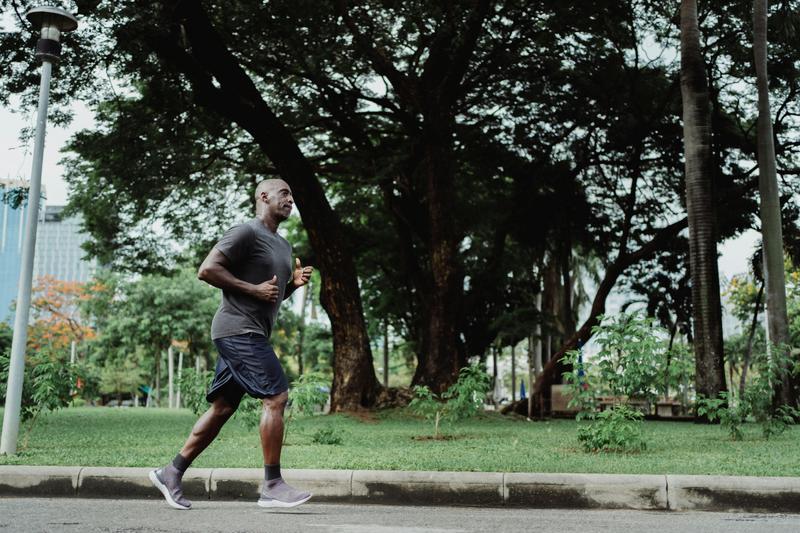My Routine Runs Me (Stacking Conditions)

Today I want to talk about a subtle pattern that can show up even in the most disciplined, high-functioning people—
Especially those who value routines, structure, and intentional living.
It’s the habit of stacking conditions.
Not as a support to your state…
But as a requirement for it.
And when that line gets blurry—your training starts to work against you.
What It Means to Stack Conditions
Let’s define it clearly:
Stacking conditions means relying on a long list of external factors to feel internally regulated.
It might look like:
- — needing a full morning routine to feel calm
- — needing uninterrupted time to feel productive
- — needing people around you to act a certain way so you can stay positive
- — needing food, exercise, or space to go exactly to plan
Now, I’m not saying routines are bad.
Personally, I go for a walk every morning. I feel clearer. More energized. It supports my training.
But here’s the distinction:
Does the routine reinforce the state you’ve already trained?
Or does it replace your ability to choose that state when life doesn’t go as planned?
That’s the line.
The Illusion of Strength When Everything Goes Right
Here’s how stacking shows up:
You have a solid rhythm.
Wake up early. Cold shower. Workout. Walk. Focus time.
You feel on. You feel strong. You feel clear.
And maybe you even think: I’ve got this figured out.
But then—
You oversleep.
The gym’s closed.
A kid’s sick.
You open your phone and the day starts early.
And suddenly, that same internal steadiness is gone.
What that reveals is simple:
You weren’t training strength.
You were stacking conditions.
And strength that depends on structure is always conditional.
Emotional Training vs Life Management
Here’s where a lot of capable people get stuck:
They believe they’re training—but what they’re really doing is managing.
They’re managing circumstances so they don’t get triggered.
Managing their schedule so they don’t feel overwhelmed.
Managing other people’s energy so they can stay “in a good place.”
It sounds like:
“I just need my time.”
“I’m off because I didn’t get to journal this morning.”
“I can’t deal with this right now—it’s messing with my flow.”
Now again—there’s nothing wrong with supporting yourself. That’s intelligent.
But over time, this kind of management creates dependency.
Instead of developing the muscle to redirect your emotional state on command…
You teach your nervous system to outsource stability to external circumstances.
When Boundaries Become Another Condition
Let’s talk about boundaries.
They’re often necessary.
But they can quietly turn into just another stack.
You cut people out. You avoid triggers. You keep your energy clean.
And it works—for a while.
Until you bump into the person you blocked.
Or someone brings them up.
Or you get pulled into something you didn’t prepare for.
And suddenly—your system floods.
That’s the sign.
You didn’t actually train through the pattern.
You just created enough space to stop feeling it.
That’s not the same thing.
Stacking Happens When We Don’t Trust Our Capacity
So why do we stack?
Because we don’t trust that we can meet intensity without falling apart.
We don’t trust that we can stay grounded when we’re tired.
We don’t trust that we can stay aligned when someone disappoints us.
We don’t trust that we can respond well when plans go sideways.
And so we build structure around ourselves like scaffolding.
We use routines, people, even “self-care” as a buffer between us and the emotional states we haven’t trained.
But here’s the problem:
The more scaffolding you build…
the less your nervous system ever learns to carry its own weight.

Replacing the Stack with Real Capacity
So how do you shift this?
Not by removing all your routines.
But by retraining the relationship you have with them.
Start here:
If the routine doesn’t happen—can I still lead my emotional state?
If the walk doesn’t happen…
If the conversation is hard…
If the environment is messy…
Can I still redirect?
Can I still stabilize?
That’s what capacity looks like.
Not perfection. Not control.
Just the ability to choose your inner state—even when the outer world doesn’t cooperate.
That’s freedom.
Reflection Prompt
Ask yourself this:
Where have I been stacking conditions instead of training capacity?
And what emotional state do I want to access…
even when the conditions aren’t ideal?
Ready to Train a Grounded State You Can Access Anytime?
If you’re ready to stop relying on routines to feel okay—and start training a steady, grounded state you can access anytime—
It’s not tips or mindset hacks.
It’s structured, repeatable training—through perception, emotion, and nervous system.
